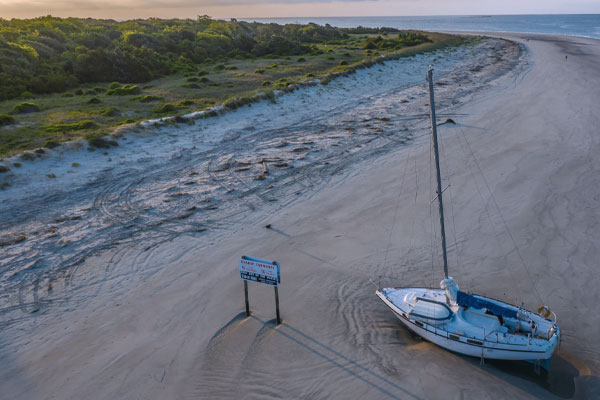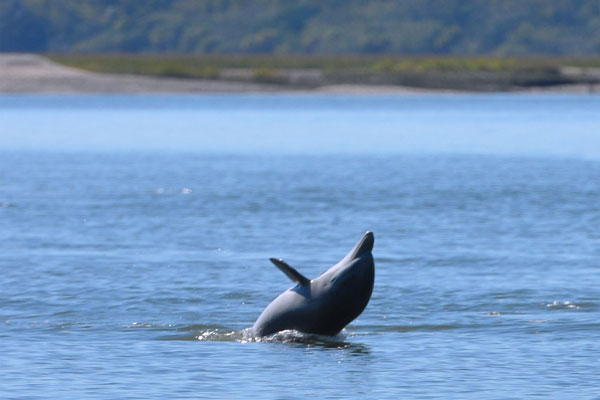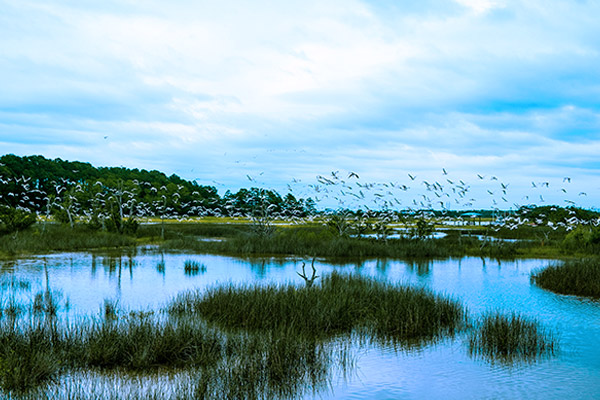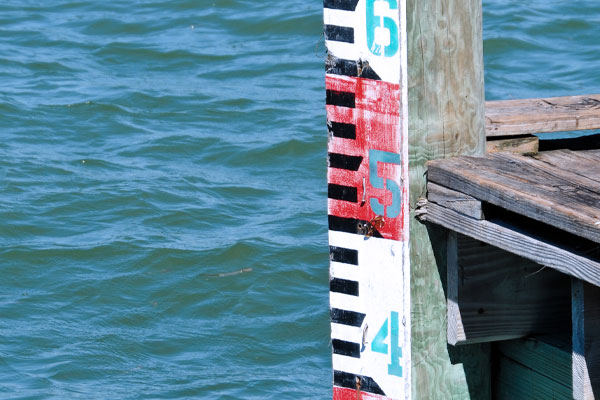Why the Port Royal Sound?
Water
It is the lifeblood flowing through the Lowcountry in rivers, creeks, and inlets, enriching our lives, inspiring our arts and culture, fueling our economy, and supporting a wealth of wildlife.
The heart of this network of waterways is the Port Royal Sound, a dynamic ocean channel between Beaufort and Hilton Head Island feeding vast expanses of salt marsh and stretching far inland to parts of Jasper County.

While the ocean and its shoreline may be what draws so many to the Lowcountry, it is the Port Royal Sound and the interconnected Calibogue Sound that make our area unique among the South’s coastal communities. Unlike freshwater rivers that originate in the mountains or coastal plains, the tributaries of Port Royal Sound, including the Broad, Colleton, and May Rivers, are actually tidal inlets fed by the Atlantic Ocean.
With the exception of a small amount of freshwater that comes from land runoff and blackwater rivers such as the Coosawatchie and New River, the Port Royal Sound Area – encompassing 1,600 square miles of land, marsh, and water – is influenced purely by the ocean, creating distinctive geological and environmental features.


Equally notable, the salt content in the sound is very high. With so little freshwater flowing into the channel, the water is virtually as salty 20 miles inland as it is in the Atlantic. The high salinity, combined with the deep water, allows sea turtles, sharks, rays and dolphins to travel from the ocean to its upper reaches.


Protecting this critical environment ensures we can all continue to enjoy the Lowcountry’s stunning natural landscape and the phenomenal lifestyle its waters provide us.